If you’re shopping for sunglasses, there’s absolutely no way you haven’t heard of Ray-Ban. In fact, you’ve probably heard people refer to sunglasses in general as ‘Ray-Bans’. The American company is responsible for outing so many iconic designs that it has become synonymous with sunglasses themselves, and we can’t help but agree. There’s no two ways about it, Ray-Ban has played a huge role in the evolution of sunglasses, both in terms of style and technology. While we know Ray-Ban for its designs, it’s not common knowledge that the company has also taken the industry leaps and bounds forward because of its innovation in lenses.
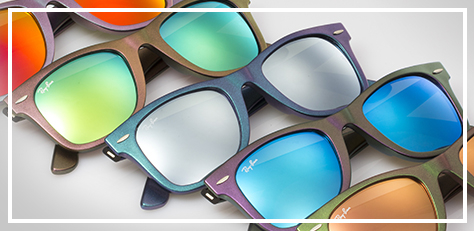
We know that sunglasses are for protection from the sun’s harmful UV rays, but what a lot of people don’t realize is that along with this protection, there are options for lenses that would reduce visual discomfort or enhance vision even more. Sunglasses aren’t just of one type, and the lenses do in fact make a difference. So read on to find out the types of lenses that Ray-Ban offers, and what’s so special about each of them.
Don’t Miss: Top 10 Ray-Ban Sunglasses for Men & Women
The official Ray-Ban website is a little unclear about the categories and types, so we’ll list them out for you clearly so that you understand them better and make a better decision while buying. Here’s how it goes:
Classic Lenses
As the name suggests, classic lenses are the ones that started it all. Featuring tried and tested technology from over the decades, these lenses represent everything Ray-Ban stands for, and are what helped it gain so much popularity and acclaim. Classic lenses come in two types, namely:
- Green Lenses G-15: G-15 lenses are the simplest and the most commonly seen lenses in the Ray-Ban range. That’s not to say that they skimp on features though, because these lenses block 85% of visible light for comfortable vision, and block most of blue light as well. The tinted green color lens offers users true to life colors and fantastic contrasts. Go for these lenses if you want the most ‘natural’ vision.
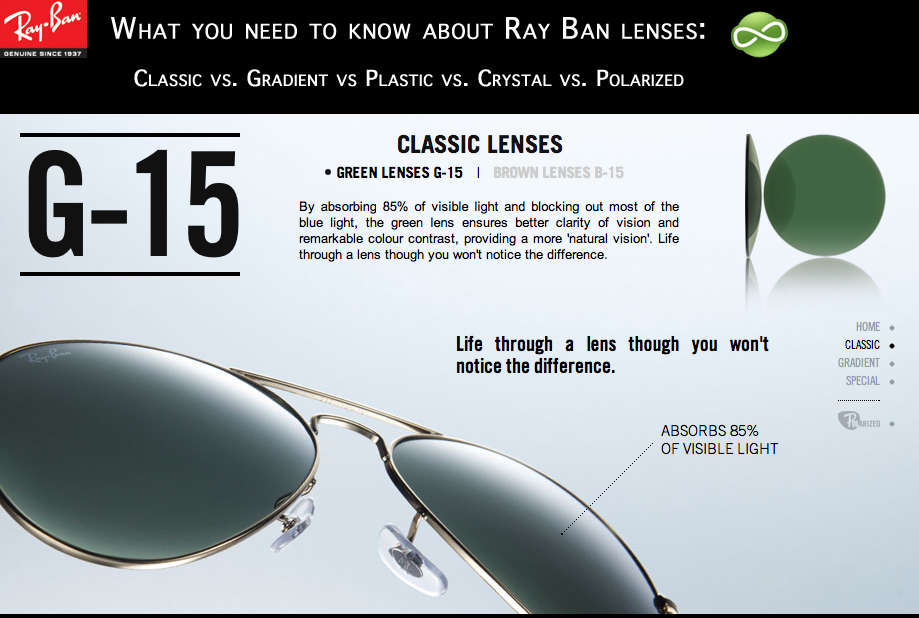
- Blue Lenses B-15: B-15 lenses are brown colored lenses. Seen mostly on Wayfarers, these lenses offer all the protection features of the G-15’s, but also additionally offer greater contrast in low light regions. If that’s your thing, B-15’s are the lenses for you.
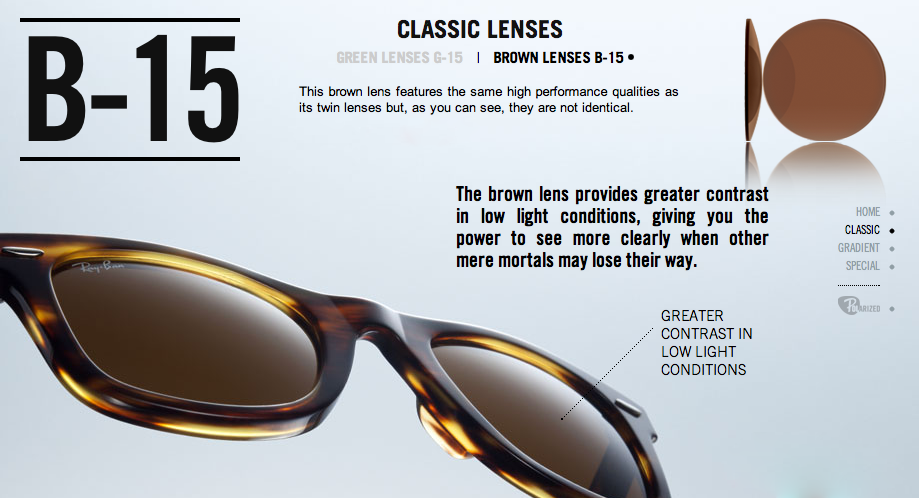
Gradient Lenses
Gradient lenses are the types of lenses that are darker at the top and get progressively lighter by the bottom. Some gradient lenses are even darker on both the top and bottom, leaving a lighter strip in between. Not only do they function as a style statement, but they also work very well to protect your eyes. They also have two types:
- Crystal Gradient Lenses: These lenses are made out of crystal, and are tinted on the backside using a high vacuum process. This helps with proper contrasts and color transitions. Most, if not all, Ray-Bans come with an option for crystal gradient lenses as well.
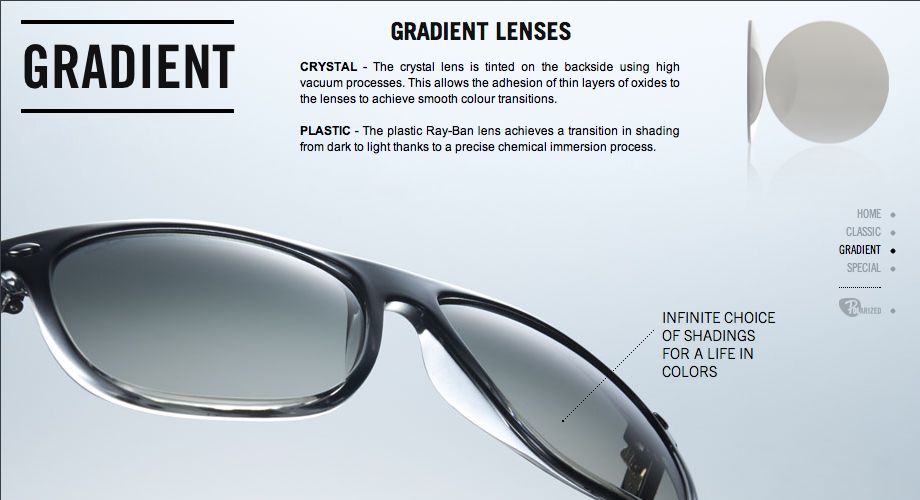
- Plastic Gradient Lenses: Made out of plastic and very durable, plastic gradient lenses are better than crystal gradient lenses in terms of durability as well.
Special Lenses
So the name says it all, doesn’t it? Special lenses are lenses that offer something that nothing else in their range does. They also come in two types:
- Mirror Lenses: Mirror lenses are a super cool type of lenses that deflect all light falling on the outer side of the sunglasses. It basically gives the opposite person a mirror to look into, and also reduces glare, so it’s a win-win, right?
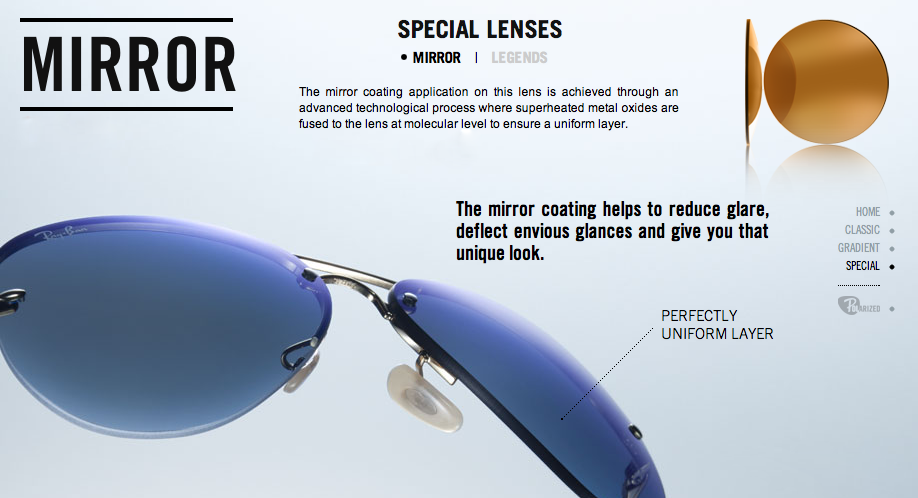
- Legends: A special edition vintage based range, Legends lets you relive all old looks while still looking fresh, and protecting your eyes. Legends are also made of crystal, so they offer great contrast and true to life color reproduction as well.
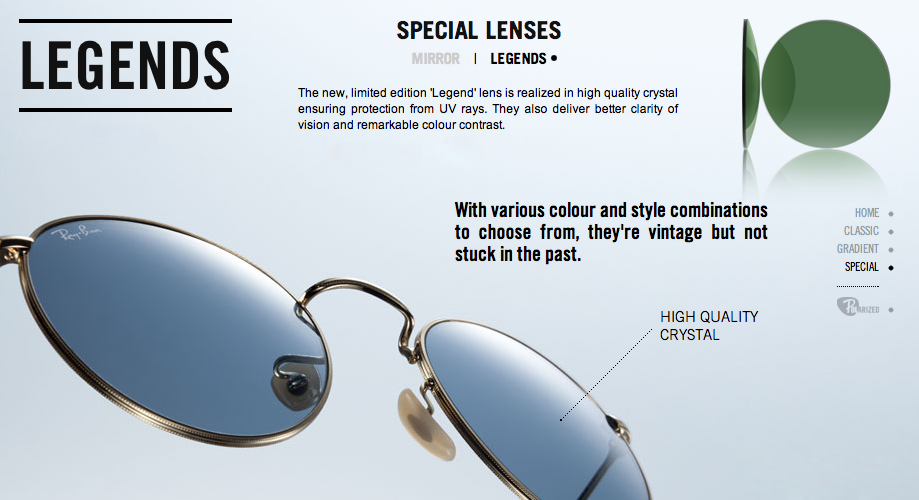
Polarized Lenses
Last but not the least, Polarized Lenses are the types of lenses that include a vertically polarized coating on the outer surface to get rid of high levels of horizontally polarized light, which enters our eyes and causes visual discomfort. They’re also great for sports and fishing during the day, so that users don’t have a problem with glare and some details being incomprehensible in sunlight. You should be able to find out more about polarized glasses in our recent feature.
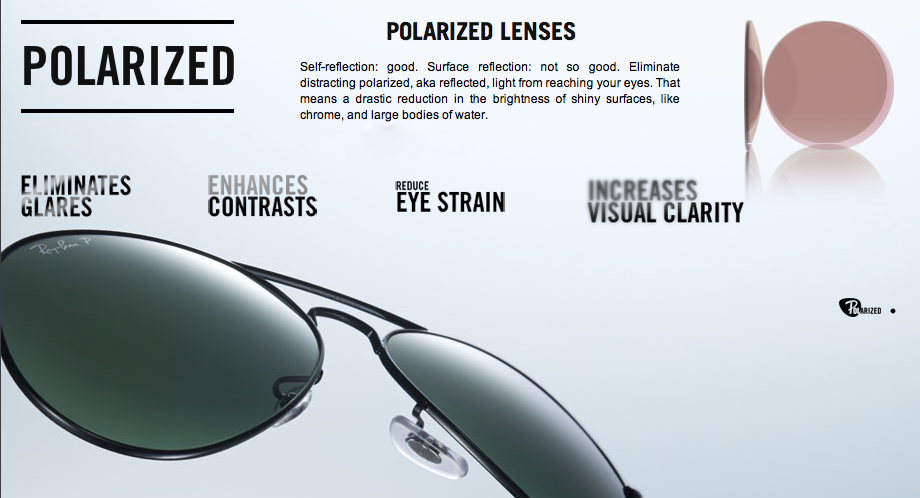
Polarized lenses increase visual clarity, enhance contrasts and reduce eye strain, but may not work well in all situations, as we’ve described in our separate feature. Our recommendation? Go for polarized sunglasses, because there’s nothing quite like them, and despite all the little niggles, they provide the best support and features. Sure you might be paying a little bit more, but you’re protecting yourself, and that’s something you really can’t put a price on, can you?
And that’s it folks! Let us know what you thought about all the different types of Ray-Ban lenses via the comment below!
Image Credits: www.ray-ban.com, assets.ray-ban.com
